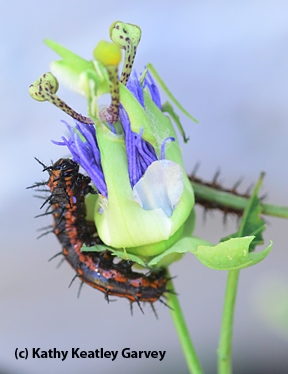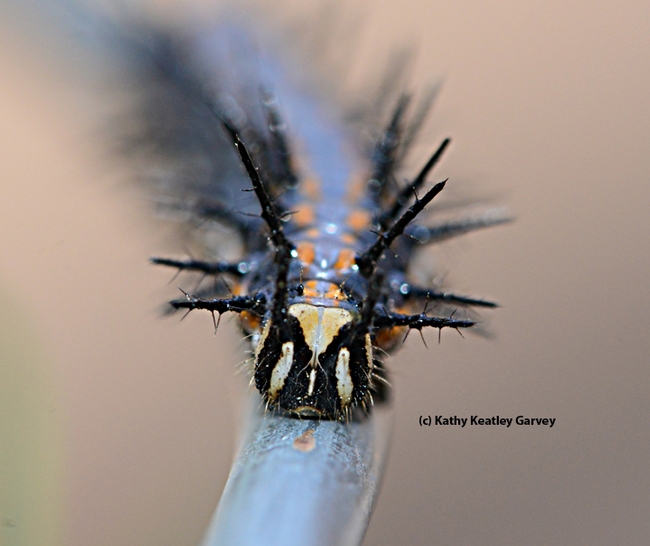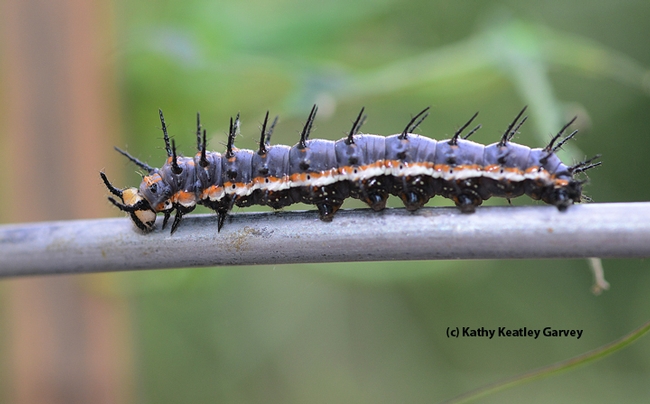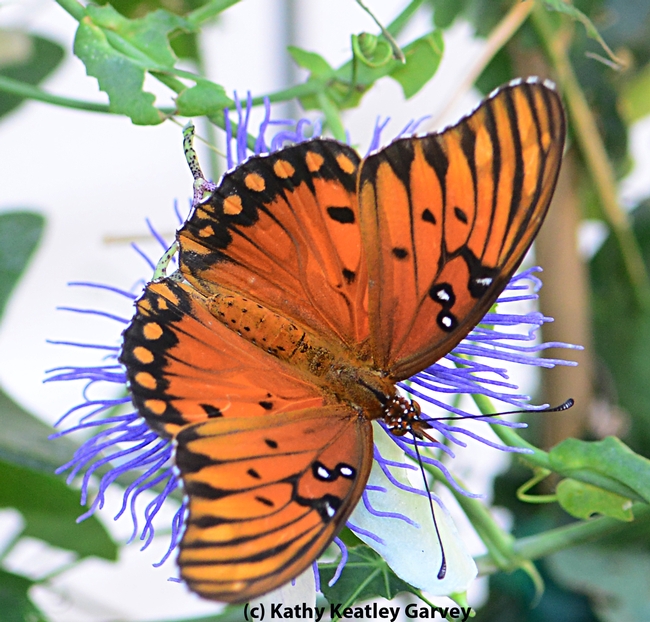
NIMBY--"Not in My Back Yard"--is a term used to target unwanted development projects in a neighborhood. Irate residents ban together and tell a governmental agency, such as a city council: "Not in My Back Yard!" For example, they don't want that chemical plant, prison, toxic waste dump, strip club or casino next to them.
But if you have butterflies in your back yard, NIMBY doesn't apply.
We planted seven passionflower vines (Passiflora) to attract the tropical Gulf Fritillaries (Agraulis vanillae), the brightly colored orange-reddish buterflies belonging to the family Nymphalidae and subfamily Heliconiinae.
It's a joy to see them fluttering around the yard--the females laying eggs and the males cruising for a "date." From the eggs to the caterpillars to the chrysalids to the adults--the Gulf Frit population keeps expanding.
Then, surprisingly, we spotted an unfamiliar-looking caterpillar among all the rest.
"What is this?" we asked noted butterfly expert Art Shapiro, professor of evolution and ecology at UC Davis, who monitors the butterfly population in the Central Valley and maintains a butterfly site.
"It's the melanic phase of the Gulf Frit larva, well-known in the southeast United States and in South America, but I've never seen one in California," Shapiro said. "Presumably genetic, but the genetics have not been worked out. See if you can breed from it!"
Wow!
Well, what to do? We popped the VIP (or rather VIC for "Very Important Caterpillar") in our butterfly habitat container, newly purchased from the Bohart Museum of Entomology.
The container is now home to a dozen caterpillars, six chrysalids, and one VIC.
But breeding the butterfly? First, the caterpillar would have to form a chrysalis. Then, if and when the butterfly emerges, we'll have to determine the gender, provide a mate, and see if anything happens.
We're waiting.
Patiently.
Attached Images:


